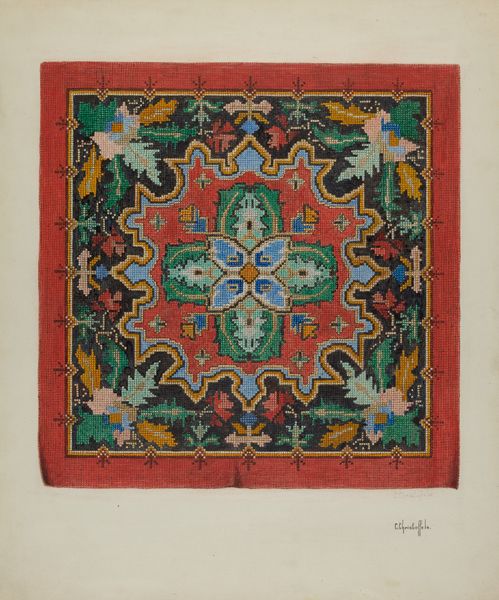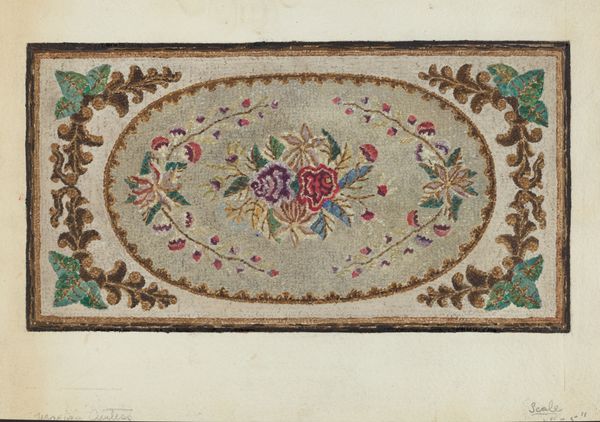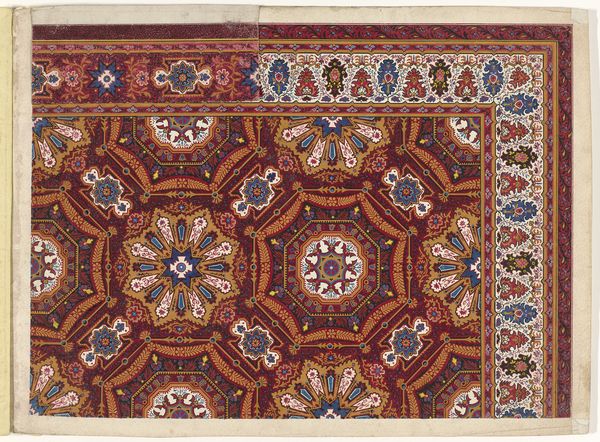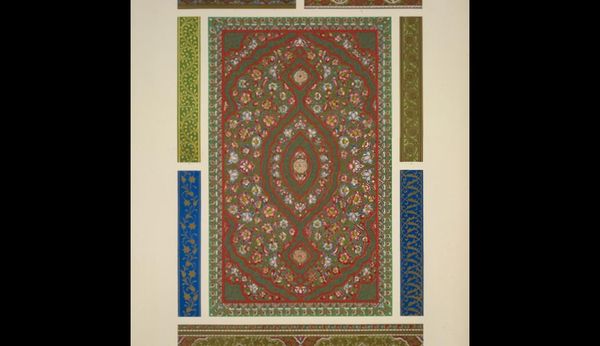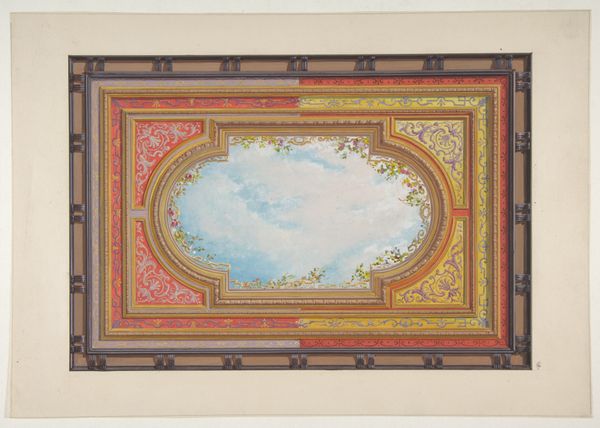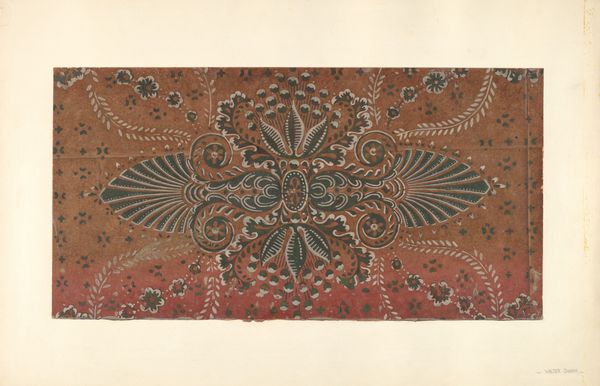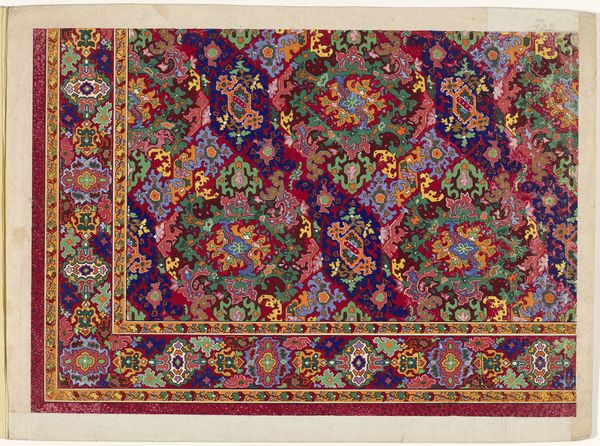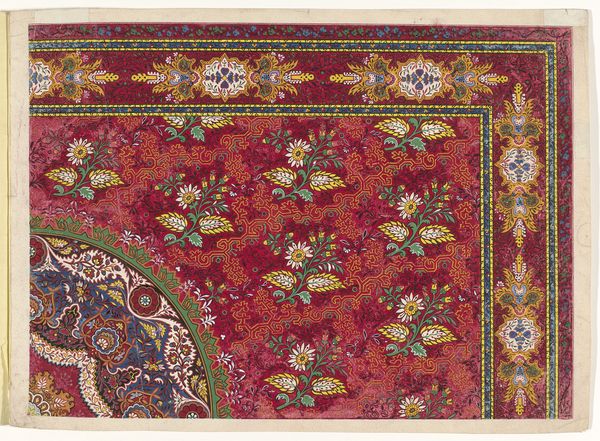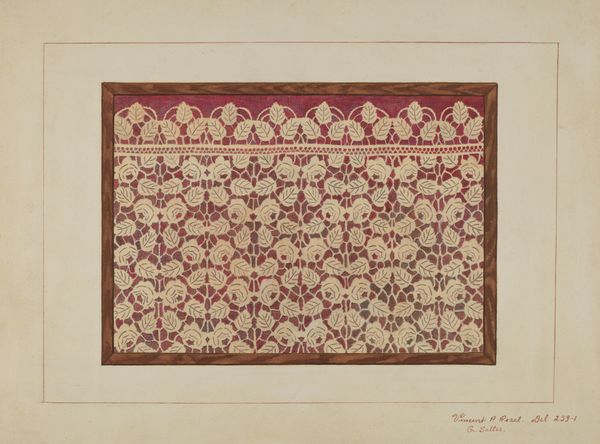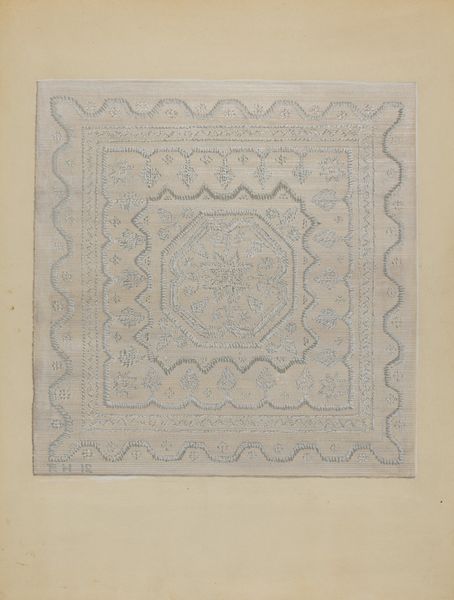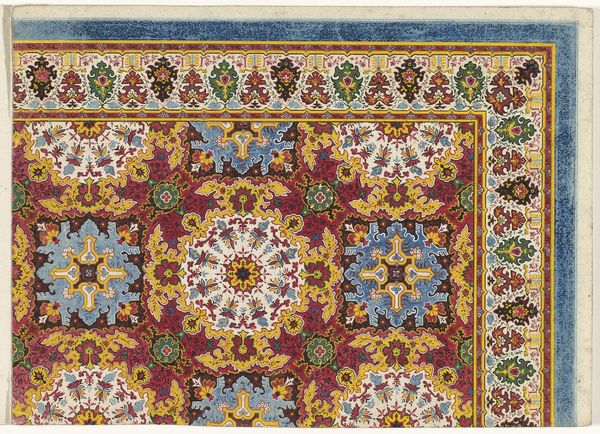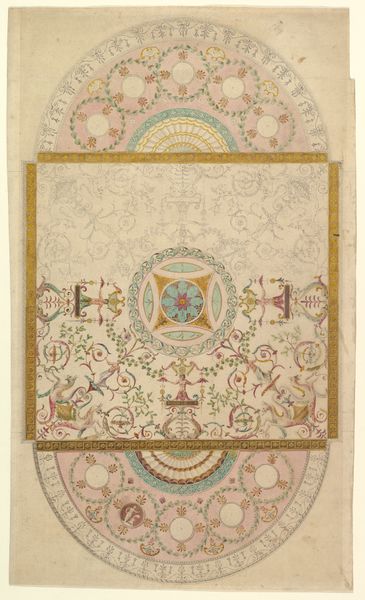
Design for a Painted Ceiling with Strapwork and Foliage on a Rose Background 1850 - 1900
0:00
0:00
drawing
#
drawing
Dimensions: 7 3/4 x 11 5/8 in. (19.7 x 29.5 cm)
Copyright: Public Domain
Curator: We’re looking at a design, likely for a painted ceiling, by Jules-Edmond-Charles Lachaise, made sometime between 1850 and 1900. It features strapwork and foliage against a rose background. The museum categorizes this as a drawing and print. Editor: My first impression is that it is strikingly delicate, even muted, with that pale rose color dominating. It makes me wonder about the labour involved. I’m thinking specifically about the pigments that went into producing a drawing like this. Curator: Absolutely. It speaks to the tradition of decorative arts, doesn't it? These intricate patterns were never merely aesthetic; they represented power and prestige. Consider the socio-economic context: Who would commission such an elaborate ceiling, and what does that tell us about class and taste in that era? Were the materials and pigments sources locally or internationally, considering patterns of exploitation through trade routes? Editor: Precisely. The design seems like an aspirational fantasy meant to conceal the realities of the people and means by which they obtained the material for construction. The level of detail, rendered through printing and drawing, demands skill but it begs the question, skill used toward what end, and what of the tradespeople actually responsible for production? Curator: Indeed. This drawing’s pattern embodies a kind of gilded cage. Note how the symmetry almost traps the eye. This period witnessed significant social upheaval; art like this could function as an ideological smokescreen, obscuring systemic injustices under a veneer of beauty. Who would be lifted to build it? How might they have lived in relation to it? Editor: The tension between the overt luxury depicted and the concealed labor beneath the surface becomes almost unbearable the longer you look. So much material history condensed in one drawing. Curator: Right. Looking closely reveals so much more. Hopefully, questioning the systems of display, construction, labor, and materials provides a glimpse into our present condition too. Editor: Examining what is emphasized—and equally, what is obscured from view. That's our task, isn't it?
Comments
No comments
Be the first to comment and join the conversation on the ultimate creative platform.

